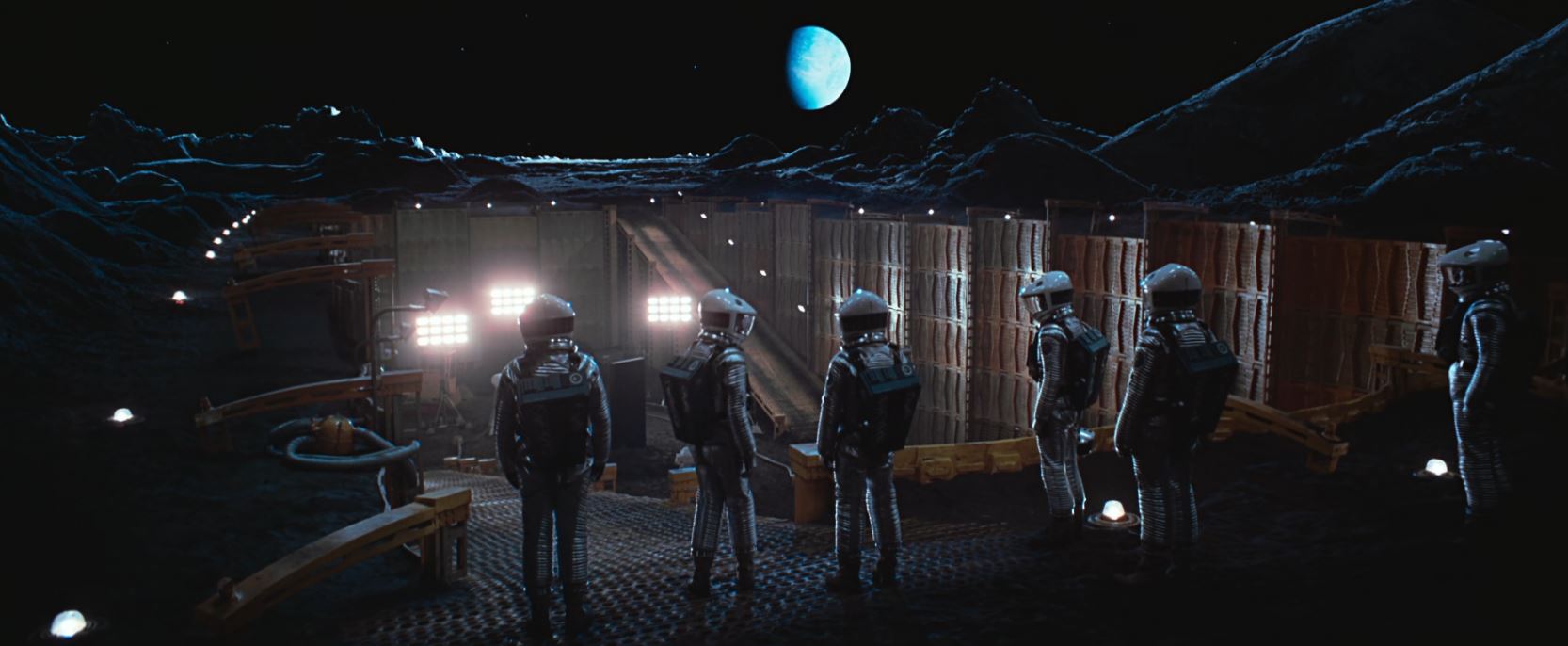

SpaceNews: China interested in lava tubes.
China, and anyone interested in a Moon base, should be interested in lava tubes. If NASA does wake up, it’s likely to roll over and go back to sleep. Fortunately, Elon Musk needs a Moon base to get to Mars.
The movie, 2001: A Space Odyssey, got a lot right. The surface of the Moon is an obnoxious place to live. The surface temperature goes from about -200o F to 200o F. Gamma rays bombard the surface, but cosmic rays are a bigger problem. Cosmic rays hitting the Earth produce the Northern Lights as their energy dissipates in the atmosphere and are deflected by our magnetic field. Those subatomic particles moving at nearly the speed of light, are not easily screened.
On the Moon, going underground is the best answer. 2001: A Space Odyssey came out a year before Neil Armstrong set foot on the Moon. Lunar lava tubes were not anticipated. In the movie, it was while excavating that the monolith was found.
As part of the Apollo 15 mission, a drill was used to bore a 60 inch deep hole in the Moon for an experimental probe.
An interesting thing was learned. A half-meter under the surface, the temperature is a consistent -4o F. Recall that the surface is -200o F for the two-week night and 200o F for the two-week day. Those extremes are difficult to accommodate. A bad Winter-in- Ohio temperature is manageable. In a lava tube, the temperature should be about the same.
In an air-tight enclosure in a lunar lava tube, a person could get by with a heavy coat and mittens. The situation would be better than that. With no atmosphere, an enclosure on an insulated platform, would lose very little heat. A person puts out about 150 W of heat energy. Anything using electricity would also contribute heat. Based on the size of the enclosure, getting rid of heat would the concern.
In a related manner, the Mall of America in Minnesota, has air conditioning, but no heating system. Skylights and people generate more than enough heat.
Lunar lava tubes tend to be big, measuring in the hundreds of feet. Plenty of room, but could the roof collapse? Sure, but if it hasn’t collapsed in 100 million years, it’s a decent bet. The Apollo missions set up a seismic network. Tidal forces from the Earth are the primary cause. Moonquakes last longer and are weaker.
The Moon has plenty of ice and oxygen bound up in minerals. The only thing necessary for people to make a go of it is a reliable source of energy.
Solar panels are obvious, but have limitations. They don’t make much electricity and they’d be susceptible to damage from small meteors. A small, passive nuclear power plant would do it. One solution would be to capitalize on the -200o F to 200o F temperature swing on the surface. That temperature difference would provide plenty of thermal energy to power a heat engine. The Moon has plenty of iron, aluminum and titanium to construct the tanks need for heat reservoirs.
Why do we need a Moon base?
In short, to get to Mars and beyond, we need a maintenance and fueling depot. The Earth’s atmosphere and gravity make it a challenging launch platform.
The International Space Station is great for micro-gravity research, but plans are already underway to decommission it. Humans deteriorate in micro-gravity. In 2001: A Space Odyssey, rotation provided simulated gravity. The ISS is in low Earth orbit, so partially protected by the Earth’s magnetic field. Meteors and the remaining radiation are threats. A space station is more trouble than it’s worth.
The Moon provides mineral resources, protection and some gravity without the troublesome atmosphere. It’s worth pitching some tents in a Moon cave to learn what it takes to establish a self-sufficient base.